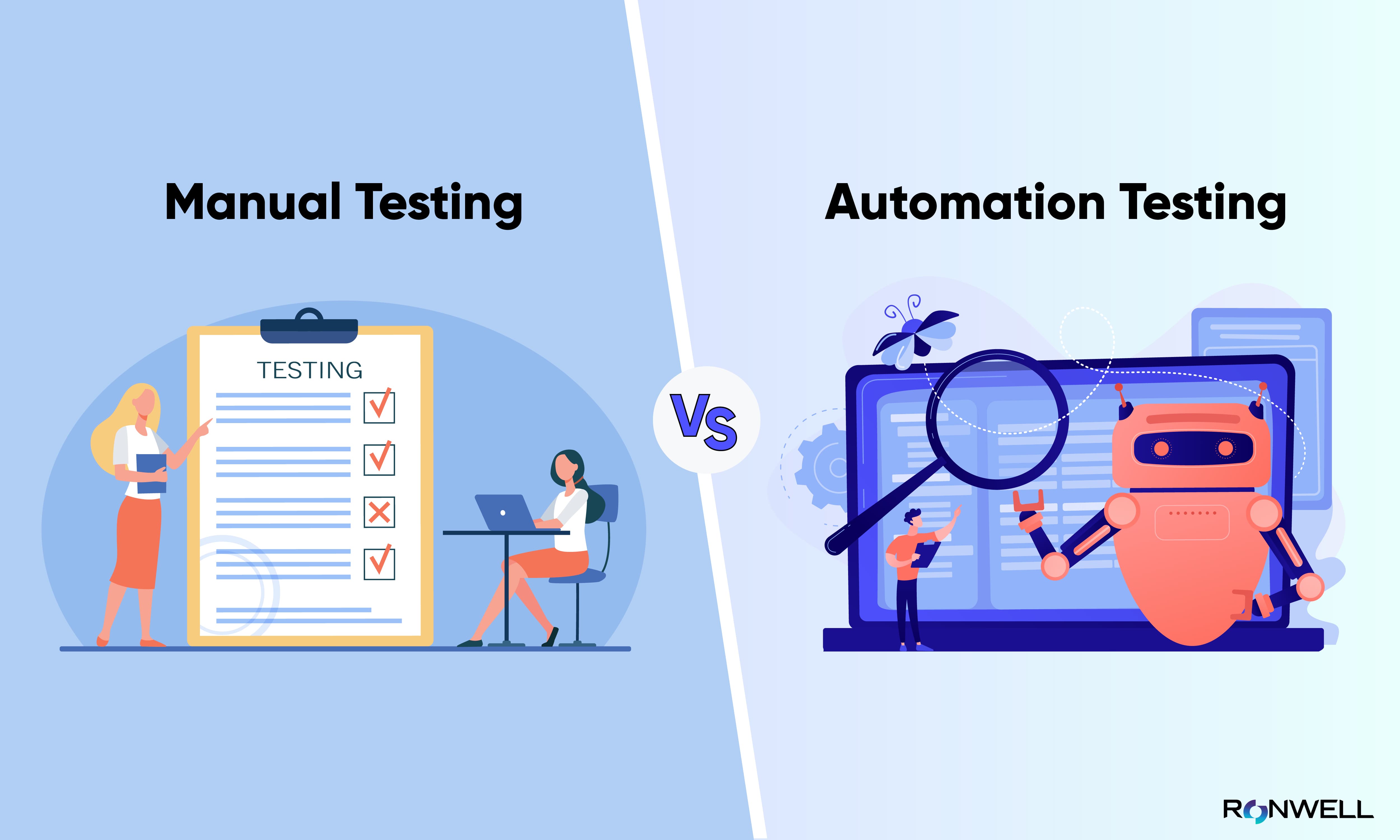From Manual to Automated Testing: A Comprehensive Overview to Transitioning Efficiently and Efficiently
In the world of software application testing, the change from guidebook to automated processes has ended up being an increasingly vital change for organizations looking for to boost performance and accuracy in their screening practices. As technology proceeds to advancement, the need for smooth and reliable computerized testing approaches has actually never been extra pressing. The journey from guidebook to automated testing is not without its challenges, yet when come close to purposefully and with a clear strategy in mind, the benefits can be considerable - automation testing. In this comprehensive guide, we will discover vital steps and considerations essential for an effective transition, from the initial option of devices to the integration of automation right into existing process. Remain tuned to reveal the understandings that will help lead the way for a smoother and more reliable testing process.
Benefits of Automated Examining
Automated testing supplies many advantages, boosting performance and precision in software program advancement procedures. One main benefit is the considerable decrease in screening time. Automated tests can be run simultaneously on numerous devices and operating systems, drastically quickening the screening stage compared to hand-operated testing. This boosted effectiveness enables for faster feedback on the top quality of the software program, enabling developers to determine and address concerns immediately.
Additionally, automated testing makes sure a higher level of accuracy in detecting problems. Because automated tests comply with predefined scripts, human error is reduced, bring about more trustworthy examination results. Consistency in testing is likewise improved, as automated examinations execute the same actions precisely each time they are run. This uniformity is important in making certain that all capabilities of the software application are completely checked, decreasing the likelihood of undetected pests sliding through to manufacturing.
Choosing the Right Devices

First of all, assess your demands and purposes. Understand the range of your task, the technologies involved, and the skill collection of your team. This analysis will help you figure out the abilities and functions you require in your screening devices.
Secondly, think about the compatibility of the devices with your existing systems and procedures. Smooth combination with your current software application advancement lifecycle is necessary to guarantee a smooth shift to automation.
In addition, evaluate the scalability and flexibility of the devices. As your testing needs evolve, the devices should be able to adapt and accommodate changes effectively.
Last but not least, consider the assistance and area around the devices. Durable support and an active customer area can supply beneficial sources and aid when carrying out automated screening. By thoroughly considering these elements, you can choose the right devices that line up with your needs and set the stage for a successful transition to automated screening.
Creating Efficient Examination Scripts

When crafting examination scripts, it is important to consider the details needs of the software program being tested and make certain that the manuscripts attend to all critical performances. Clear and detailed calling conventions for test manuscripts and test instances can enhance readability and maintainability. Additionally, incorporating mistake handling systems within the examination scripts can assist in recognizing and attending to problems quickly.
Additionally, arranging examination scripts right into modular elements can improve reusability and scalability, decreasing redundancy and enhancing performance in examination manuscript maintenance. Regular like this testimonials and updates to evaluate manuscripts are important to equal developing software demands and performances. By following these concepts, testers can produce durable and reliable test manuscripts that add dramatically to the success of automated screening procedures.
Integrating Automation Into Workflows
Effective integration of automation tools into existing workflows enhances and simplifies procedures performance within software development cycles. When integrating automation right into process, it is important to recognize repeated jobs that can be automated to save time and minimize human mistake. By perfectly incorporating automated testing devices like Selenium or Appium into the software program advancement lifecycle, teams can attain faster comments on code modifications, resulting in quicker insect discovery and resolution. This assimilation permits for continuous testing throughout the growth procedure, guaranteeing that any kind of concerns are recognized beforehand, resulting in higher software quality. Furthermore, automation can be used to cause examinations immediately after each code commit, giving instant validation and freeing up testers to focus on even more facility circumstances. Correct integration of automation tools requires cooperation in between development, testing, and operations teams to establish a unified workflow that enhances efficiency and effectiveness in providing top quality software application items.
Guaranteeing a Smooth Change
Effectively transitioning to automated screening entails careful planning and careful implementation to maximize and lessen disturbances efficiency in the software advancement process - automation testing. To guarantee a smooth shift, it is important to begin by carrying out an extensive evaluation of the current testing processes and determining areas where automation can bring the most significant advantages. Involving with all stakeholders at an early stage at the same time, including programmers, testers, and project supervisors, is essential for gathering assistance and buy-in for the automation effort
Interaction is essential throughout this transition stage. Clear interaction of the goals, benefits, and expectations of automated screening helps to take care of any resistance or problems that might arise. Furthermore, providing ample training and resources for staff member additional info to upskill in automation tools and methods is crucial for ensuring a successful transition.

Conclusion
Finally, transitioning from manual to automated screening offers various advantages, including boosted performance and dependability. By picking the appropriate devices, composing effective examination manuscripts, and integrating automation flawlessly into process, companies can make certain a effective and smooth change. It is important to welcome automation as a useful asset in software application screening processes to enhance general high quality and performance.
In the world of software program testing, the change from handbook to automated processes has actually become a significantly crucial change for companies seeking to improve effectiveness and precision in their testing techniques. Automated examinations can be run all at once on numerous tools and operating systems, considerably speeding up the screening stage contrasted to her comment is here hands-on screening. Uniformity in screening is additionally boosted, as automated tests perform the very same steps specifically each time they are run.To make certain the effective application of chosen screening devices, the creation of reliable test scripts plays a vital role in verifying the capability and performance of automated processes - automation testing. By following these principles, testers can develop effective and durable test manuscripts that add substantially to the success of automated testing processes